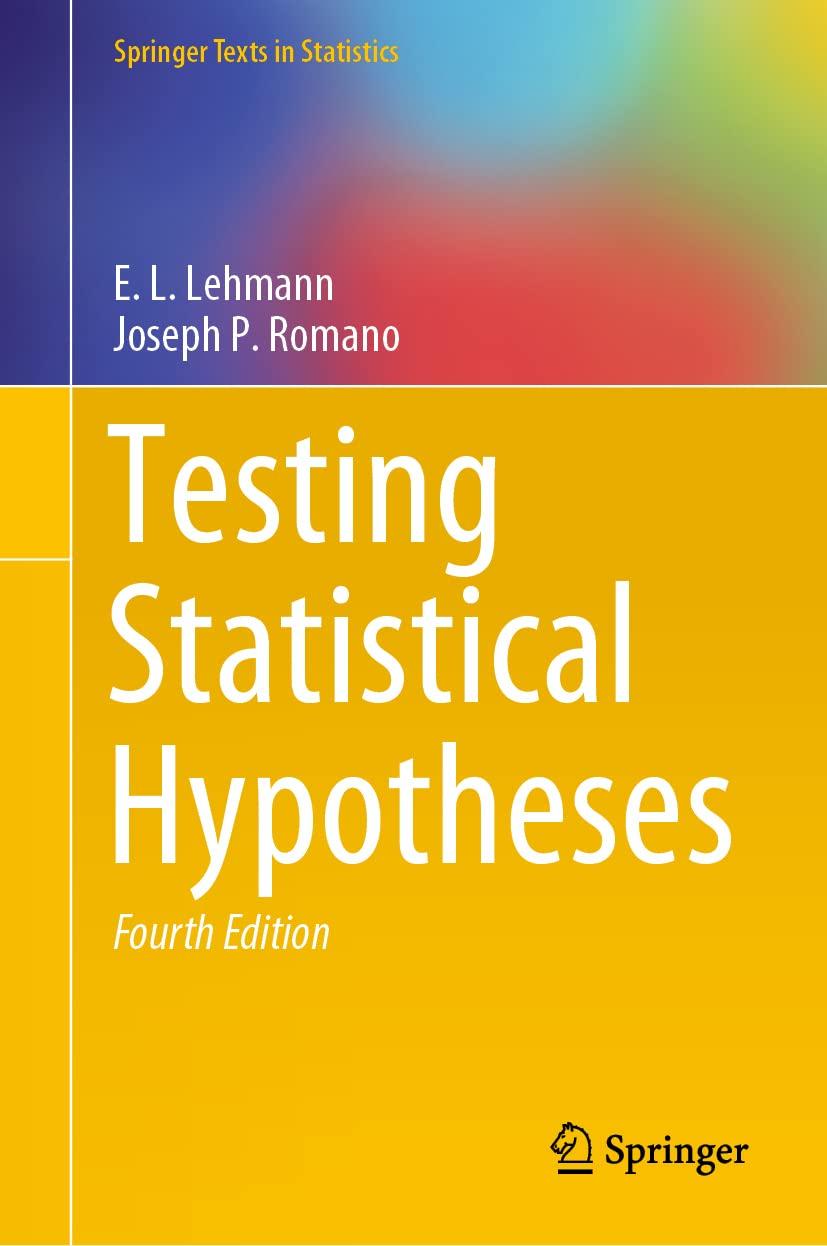(i) Let (X1, Y1), . . . , (Xn, Yn) be a sample from a bivariate normal...
Question:
(i) Let (X1, Y1), . . . , (Xn, Yn) be a sample from a bivariate normal distribution, and let
ρ = C−1
⎛
⎝
(Xi − X¯)(Yi − Y¯)
(Xi − X¯)2 (Yi − Y¯)2
⎞
⎠ , where C(ρ) is determined such that Pθ
⎧
⎨
⎩
(Xi − X¯)(Yi − Y¯)
(Xi − X¯)2 (Yi − Y¯)2
≤ C(ρ)
⎫
⎬
⎭ = 1 − α.
Then ρ is a lower confidence limit for the population correlation coefficient ρ at confidence level 1 − α; it is uniformly most accurate invariant with respect to the group of transformations X i = a Xi +
b, Y i = cYi +
d, with ac > 0, −∞ < b, d < ∞.
(ii) Determine ρ at level 1 − α = .95 when the observations are (12.9,.56), (9.8,.92),
(13.1,.42), (12.5,1.01), (8.7,.63), (10.7,.58), (9.3,.72), (11.4,.64).
Note. The following problems explore the relationship between pivotal quantities and equivariant confidence sets. For more details see Arnold (1984).
Let X be distributed according Pθ,ϑ, and consider confidence sets for θ that are equivariant under a group G∗, as in Section 6.11. If w is the set of possible θ-values, define a group G˜ on X × w by g˜(θ, x) = (gx, gθ¯ ).
Step by Step Answer:

Testing Statistical Hypotheses Volume I
ISBN: 9783030705770
4th Edition
Authors: E.L. Lehmann, Joseph P. Romano






